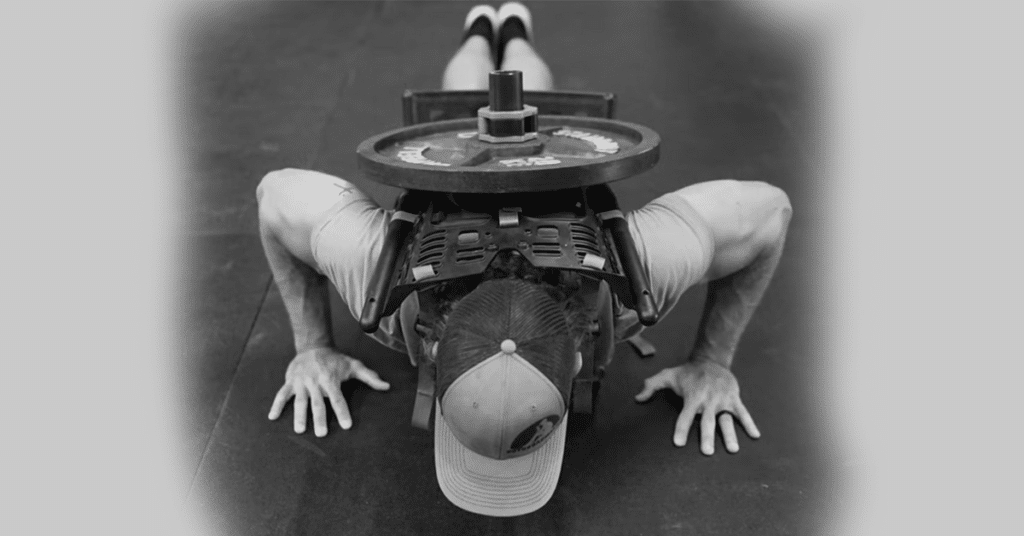Outdoorsmans Atlas Trainer: Best Buyers Guide
This full guide to the Outdoorsmans Atlas Trainer will explain everything you need to know about this incredible piece of kit, and why it should become part of your gym and training routine.
What is the Outdoorsmans Atlas Trainer?
This is a bespoke, high-quality piece of training kit for athletes that enables bumper and weight plates to be attached to the body when training.
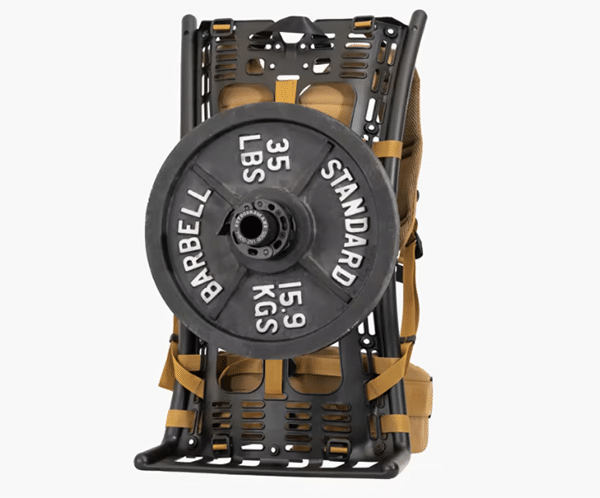
In its most simple form, it is a weighted rucksack.
- What is the Outdoorsmans Atlas Trainer?
- The Outdoorsmans Atlas Trainer
- Specifications
- How Much Weight Can the Outdoorsmans Atlas Trainer Carry?
- How Much does the Outdoorsmans Atlas Trainer Weigh?
- How Much does the Outdoorsmans Atlas Trainer Cost?
- Why The Atlas Trainer Better than a Regular Rucksack?
- How Versatile is the Altas Trainer?
- Where is the Best Place to Buy the Outdoorsmans Atlas Trainer?
- Training with the Atlas Trainer
- Weighted Rucksacks are the Foundation of Training for Humping
- Get a Rucksack with a Good Solid Frame
- Get One that has a Padded Waist Belt
- Train to Run with your Rucksack
- Humping Techniques
- Increase Weight Gradually
- Conclusion
The Outdoorsmans Atlas Trainer
As an alternative to standard rucksack training with rocks or sandbags, the Atlas Trainer from Outdoorsman features a 7LB pack frame with a purpose-built attachment designed for carrying standard Olympic weight plates.
Capable of holding up to 90 LBS, this system provides athletes with an intense leg training tool that’s comfortable to wear, easy to load, and less brutal on the hips and knees.
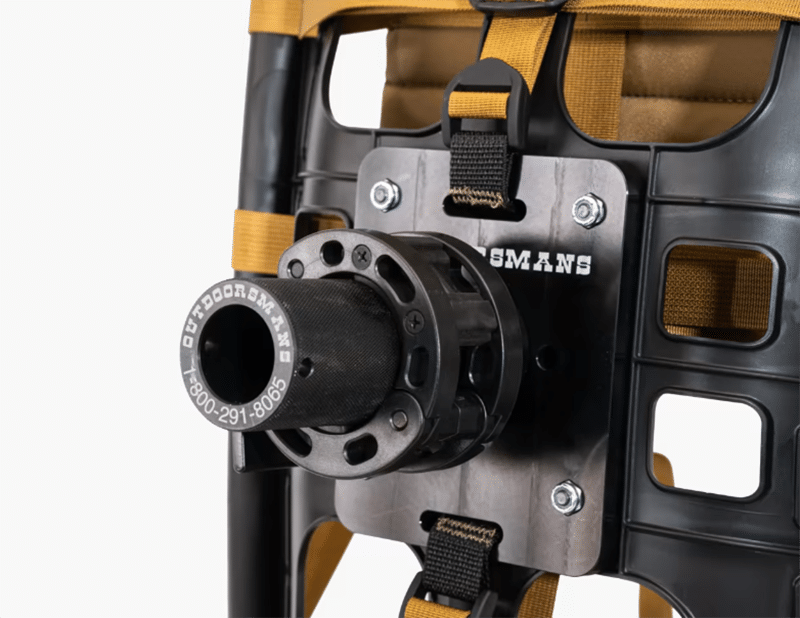
The frame is made from a durable, proprietary polycarbonate blend material with a 500D Cordura belt + harness and a billet machined aluminum plate-holder attachment.
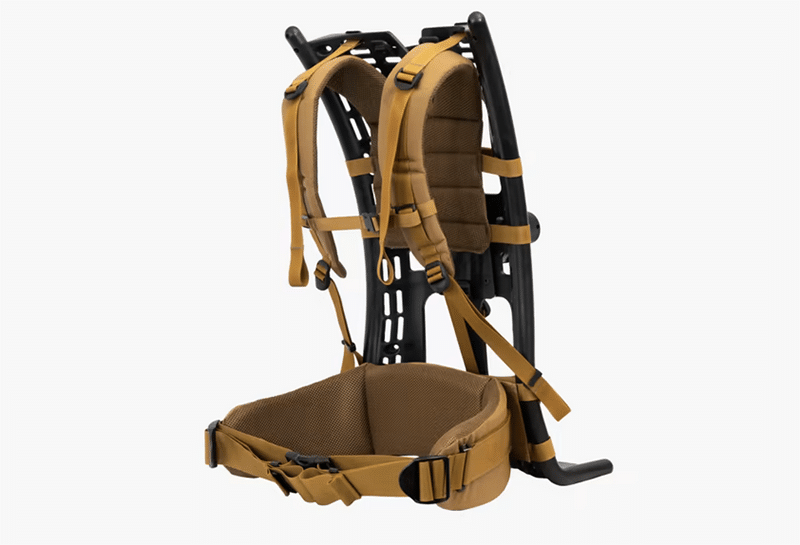
The entire Atlas Trainer Frame System ships fully assembled and includes an OSO collar for securing your plate (no plates are included with the system).
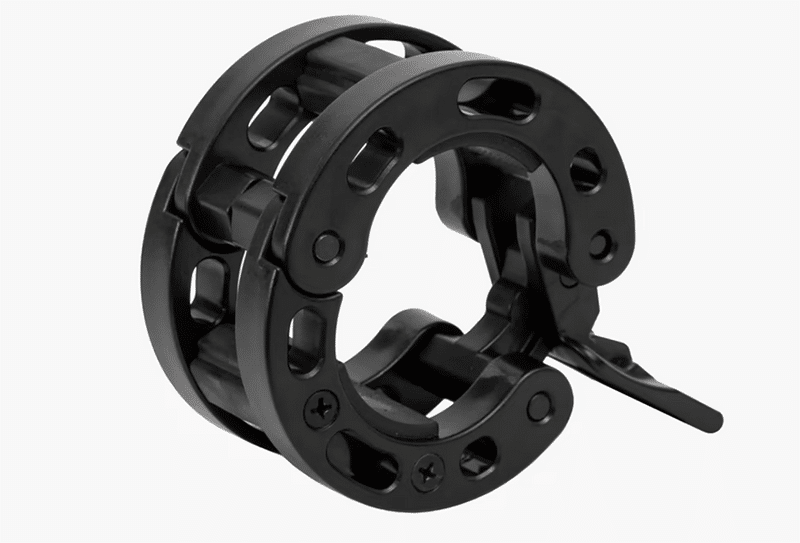
With a weight plate mounted to your pack frame, it’s easy to incorporate additional workouts into a hike, simply by removing the plate and using it for a circuit of rows, presses, front raises, etc.
You can select your Atlas Trainer in either Black or Coyote Brown.
You can also choose to add an Atlas Trainer Bladder System to your order, which is designed specifically for this unit and capable of carrying up to a 3L hydration bladder.
Specifications
- Includes Frame + Atlas Trainer Plate Mounting Attachment
- Frame Weight: 7 lbs
- Frame Sized for Most Athletes: 30-40” Waist Size, 15-19” Torso Length
- Proprietary Polycarbonate Blend Frame Construction
- 500D Cordura Belt and Harness
- Billet Machined Aluminum Atlas Attachment
- Includes OSO Barbell Collar for securing plates
- Works with any standard Olympic plate up to 45LB (plates not included)
- Load Capacity: 90 LBS
- Colour Options: Black or Coyote Brown
How Much Weight Can the Outdoorsmans Atlas Trainer Carry?
The Outdoorsmans Atlas Trainer can carry up to 90 lbs.
How Much does the Outdoorsmans Atlas Trainer Weigh?
The total weight of the entire frame and straps is 7 lbs.
How Much does the Outdoorsmans Atlas Trainer Cost?
The price is 329.99 USD.
Why The Atlas Trainer Better than a Regular Rucksack?
The Atlas Trainer uses waist straps to shift the load and stop the straps burning the skin on your lower back, arms and shoulders.
The Atlas trainer does not bounce around as you run, it remains stable and secure.
How Versatile is the Altas Trainer?
The weight can be removed and used as part of the workout. This means you can add in many of the following exercises into your ruck runs, hill sprints or hikes:
- Russian Twists
- Plate Wood Chops
- Front Raises
- Bicep Curls
- Overhead Tricep Extensions
- Squats
- Bulgarian Split Squats
- Overhead Squats
Where is the Best Place to Buy the Outdoorsmans Atlas Trainer?
The best place to buy is from Rogue Fitness.
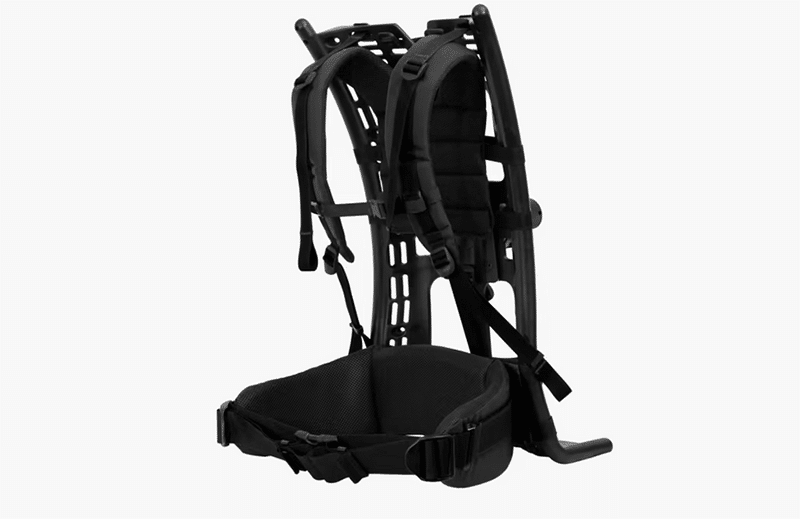
Training with the Atlas Trainer
Training with weighted rucksacks has its roots in military training.
Weighted Rucksacks are the Foundation of Training for Humping
Rucksacks are an important part of military training.
They are used in many different environments, including:
- boot camps, where soldiers learn the basics of handling their equipment and training with other recruits
- mountain warfare schools, where soldiers learn how to handle themselves in harsh terrain and climates
- infantry schools, which teach infantry tactics and strategies
Get a Rucksack with a Good Solid Frame
When you are training with a rucksack, you will be carrying heavy loads.
A good rucksack frame that is designed to carry weight should have padding and support for your back and hips.
The padding can be foam or mesh, but it should be firm so that it does not give when you put weight on the bag.
Ideally, like the Atlas Trainer, it will also have a waist belt and shoulder straps that are adjustable for different body sizes.
It’s also helpful if there’s a hip belt as well as a sternum strap to keep the pack from shifting from side to side while you are moving around in it.
Get One that has a Padded Waist Belt
A padded waist belt is an essential feature in a rucksack. It helps to distribute the weight of the rucksack across your hips, rather than on your shoulders and back.
By doing so, it reduces stress on your back and makes a smaller difference to its performance than you might think.
The key thing is that the padded waist belt should be comfortable for you.
Train to Run with your Rucksack
Running with a rucksack is different to running without one, so it’s important to learn how to do it properly.
The benefits of training with your rucksack include building up strength, stamina and endurance. Running with a rucksack also helps build muscle tone in the upper body muscles (making them look more defined).
Humping Techniques
Train to do humping techniques over rough ground and through thick woodlands.
Humping techniques are used to move over rough ground and through thick woodlands. The high crawl, low crawl, and high walk are all humping techniques that can be used in these environments.
Humped movement is characterized by the use of many short steps with the lower limbs making contact with the ground at each step.
Humped technique is used to move over irregular undulating terrain such as hillsides and mountain slopes where there are deep gullies or ravines on either side of you.
It is also useful for moving through thick vegetation (e.g., undergrowth) or steep sideslopes of streams or rivers that make it difficult for you to get up onto them (or even just down into them).
Increase Weight Gradually
Don’t try to increase the weight of your ruck dramatically in short periods of time; this is a long-term process.
Don’t try to increase the weight of your ruck dramatically in short periods of time; this is a long-term process.
- Increase your pack weight by no more than 10% per week
- Increase your pack weight by no more than 1% per week
Wear your rucksack as part of your regular training routine, not just on the weekends; this will allow you to achieve better results in the long term.
When training, you should wear your rucksack as part of your regular training routine, not just on the weekends; this will allow you to achieve better results in the long term.
Do not try to increase the weight of your ruck dramatically in short periods of time; this is a long-term process.
Conclusion
Training with rucksacks is a long-term process. It takes time to build up endurance and strength, so be patient. You will see results eventually, but you have to stick with it.
The Outdoorsmans Atlas Trainer is an excellent choice for helping you to achieve these goals.

